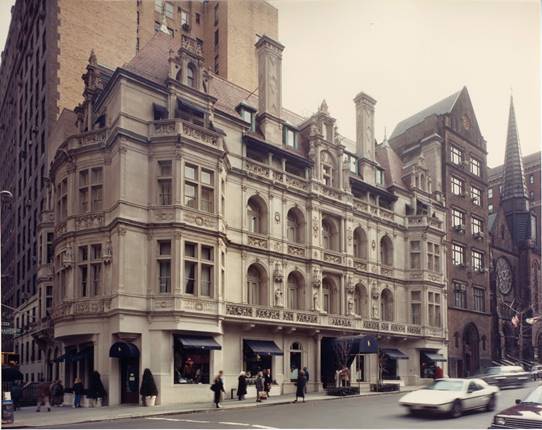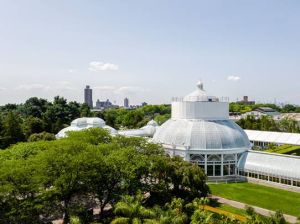Presented By: EW Howell Construction Group
Historical Restorations for Iconic NYC Cultural Institutions Among Most Active Project Types
By EW Howell Construction Group March 16, 2020 9:19 am
reprints
As one of the New York region’s oldest general contractors — 2020 will mark the firm’s 129th year in business — EW Howell Construction Group is no stranger to navigating the complex process of building in New York City. With offices in Midtown Manhattan and Plainview, N.Y., EW Howell focuses on key areas like retail, health care, and education. In 2019, its Arts & Culture team, led by Vice Presidents Bob Zirkel and Dominic Paparo, has seen significant growth in historical restoration and renovation projects across the five boroughs of NYC. Howard L. Rowland, president of EW Howell, gives Commercial Observer’s Partner Insights team the rundown on this active sector.
Commercial Observer Partner Insights: What are some of the historical restoration projects that EW Howell is working on in NYC?

Howard L. Rowland: The firm has a long-standing relationship with the New York Botanical Garden. We completed the Edible Academy there in 2018. Now, we are working with the team there to restore the dome in the Enid A. Haupt Conservatory. The majority of the Haupt Conservatory remains open— in fact, it’s where The Orchid Show: Jeff Leatham’s Kaleidoscope is on display now. Other restoration projects include the 62nd Street Comfort Station in Central Park, Unitarian Church and the exterior restoration of the Cooper-Hewitt Design Museum. The firm recently completed the facade restoration of the Lifelong Learning Center at the Park Avenue Synagogue.
Why do you think there is such a strong demand for restoration projects?
The demand has to do with the availability of funding for these projects either through public or private entities; as the economy improves, that frees up funding from both sources. There was a significant uptick in the restoration projects of cultural projects through public funding during the Bloomberg administration, and, although it’s now trending down due to changing priorities of the de Blasio administration, historic restorations are still something we’re seeing a lot of.
Also, cultural clients such as the All Souls Church, Central Park Conservancy and New York Botanical Garden have a deep connection to their buildings; it is part of their identity. When enhancements are required for continued operation, historic restoration is usually their first choice to maintain the integrity of the building.

How are restoration projects different from new construction? It seems that there would be some sensitivities involved.
Historic restoration projects are challenging because there are many unknowns vs. when you are building with new construction … you must take extreme care when investigating existing conditions in order to preserve the original materials. Different groups of subcontractors specialize in restoration trades, such as masonry, metal and interior plaster, wood and stone. Along with these specialty restoration experts, there are always standard trades involved, so understanding the management and coordination between the restoration subcontractors and standard subcontractors is a crucial component of any project.
Another challenge with this type of project is that often the building or business is still open, so any work needs to be coordinated in a way that allows the client to carry out its daily operations with minimal disruptions from the construction side.
EW Howell’s approaches all projects with its “build simply” motto. How is that beneficial when working on these types of projects?
Our build simply motto means keeping the approach simple and not complicating the management of the project. By promoting teamwork and partnering with all team members, they can remain focused on the important details of the restoration and not get caught up in the complex path along the way.
Are you seeing other sectors actively pursuing restoration (vs. renovation) projects in New York City?

An active sector is education, primarily in the private school communities. These schools have pursued restoration projects primarily through the adaptive reuse of their buildings. We have worked on a number of adaptive reuse projects for independent schools such as The Hewitt School, Park Avenue Synagogue, Spence School. However, the focus of these projects has been on the renovations of existing buildings that had been converted to school buildings and involved some restoration of those buildings, mostly exterior restoration.
There’s talk in the industry of another recession looming; do you think that restoration projects are something that would continue throughout, while other project types, like new construction, might be put on hold?
Yes, because these types of projects are either funded publicly or through private philanthropy. The current economic growth has helped the private funding, but, if that slows down, it could impact funding on the private side. Public funding is driven by the priorities of the current NYC administration, and right now we don’t see these types of projects made a priority as they have been in the past.
John Finamore, Director of Business Development at EW Howell Construction Group can be reached at jfinamore@ewhowell.com or (212) 930-1056.



